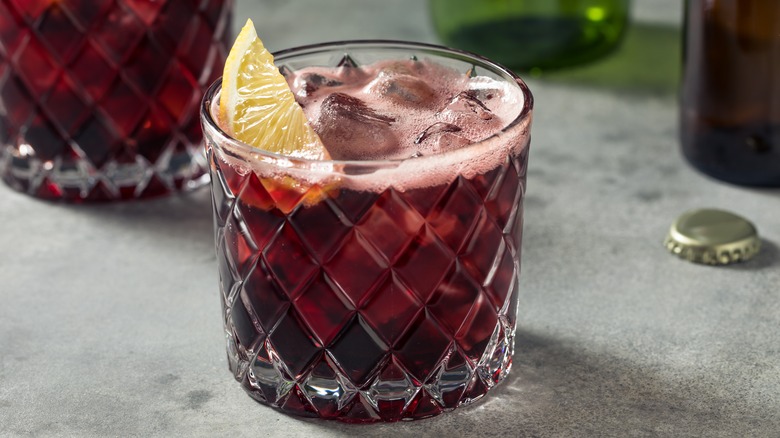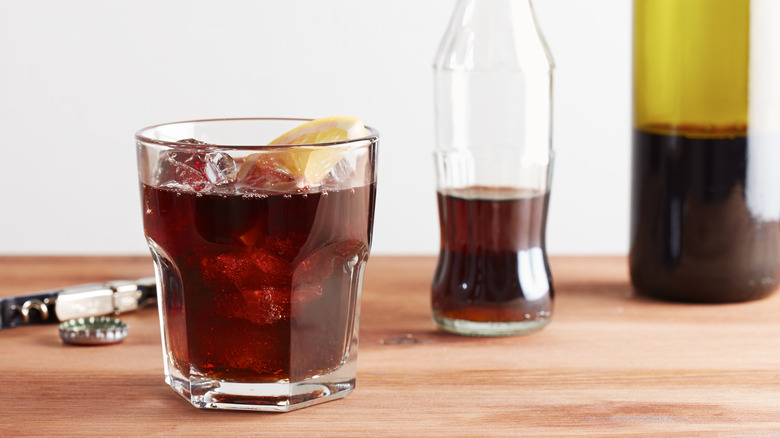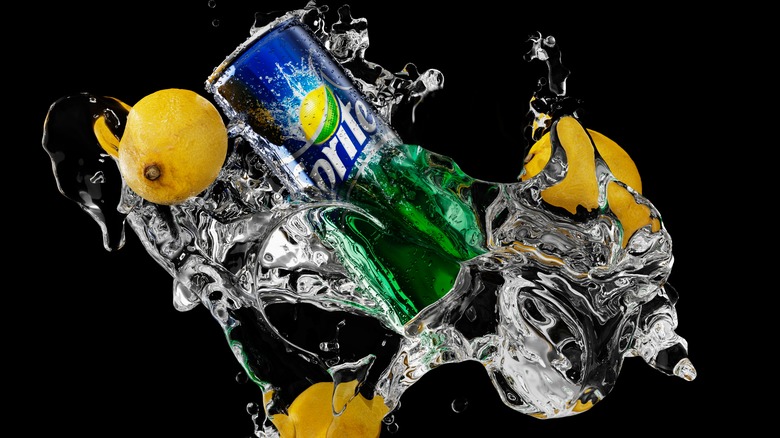What Is Spanish Kalimotxo And How Is It Different From Tinto De Verano?
Wine drinkers will probably tell you that a glass of their favorite red, white, rosé, or bubbly is the epitome of perfection just as it is. Served at the right temperature, in the right glass, a glass of wine is deliciously satisfying on its own, or paired with the right foods. There's really no reason to doctor up wine with any other ingredients, but when did anyone ever need a reason to create something fun and tasty? Putting club soda into wine turns it into a spritzer, adding brandy, citrus juices, and fruit to wine makes it Sangria, and spiking champagne with orange juice creates a mimosa. Summers and brunches just wouldn't be the same if someone hadn't used wine as a mixer.
Americans are familiar with these wine cocktails and have accepted things like juice and sparkling water in their precious wines, but many have trouble swallowing the concept of soda pop in their Chardonnays and Merlots. But the truth is, the combination can be exceptionally refreshing and delicious. Take it from a country that has mastered the art of combining pop and wine: Spain. In the sun-drenched, Mediterranean country, kalimotxos and tintos de verano are as common as tapas and Flamenco. Both drinks combine red wine and soda, but two very different kinds. After one taste, you'll wonder how you've spent your summers without these thirst quenchers.
What is a kalimotxo?
A kalimotxo or calimocho (both pronounced cali-mo-cho) is simply red wine and Coca-Cola mixed in equal parts and served over ice. It's widely believed that the drink was created in Basque country in 1972 during the celebration of the Puerto Viejo festivals (via Spanish Wine). The story goes that the servers realized their batch of red wine had gone sour and, hoping to salvage their drink offerings, decided to add cola to mask the unpleasant flavor. The servers named the well-received concoction after two of their friends, named Kalimero and Motxo. While enjoyed all over Spain, it is particularly popular in its hometown, located between the northern borders of Spain and southwestern France.
The drink is also popular in Eastern and Central Europe and in Chile, where it is known as "jote" (pronounced ho-teh). A cheap bottle of red wine, or even a boxed wine, is not only appropriate in the creation of kalimotxos but expected; you don't want to mix anything into an expensive or high end bottle of wine. Variations of the cocktail include adding a shot of rum or ouzo, substituting orange soda for the cola, and doctoring it up with blackberry liqueur.
What is tinto de verano?
If adding one soda to wine worked so well, wouldn't another be just as delicious? The Spanish thought so as is evident with tinto de verano, which translates to "red wine of summer." Also made with inexpensive red wine, tinto de verano uses lemon-lime soda as opposed to cola. The two are mixed in a 1:1 ratio, and it's not uncommon to see them garnished with a slice of lemon. Some liken the flavor to Sangria though it's obviously made with fewer ingredients. In fact, the Spanish consider Sangria more of a tourist beverage, as its price tends to reflect (via The Spruce Eats). So while out-of-towners will order higher-priced Sangria, the locals enjoy the much more affordable (and just as tasty) tinto de verano.
The drink originated in the early 20th century when Federico Vargas whipped up the beverage for his overheated and thirsty customers at his Córdoba-based restaurant, El Brillante. It was wildly popular and eventually became equated with refreshment in hot weather all over the country. It is so popular that it is sold bottled and canned throughout Spain, and is a common sight at parties, festivals, and other get-togethers. Although kalimotxos and tinto de verano are slightly different, they both can be game-changing drinks, particularly for red wine drinkers who tend to set aside their reds during the summer in favor of more refreshing choices. With these two options, that's no longer necessary.


